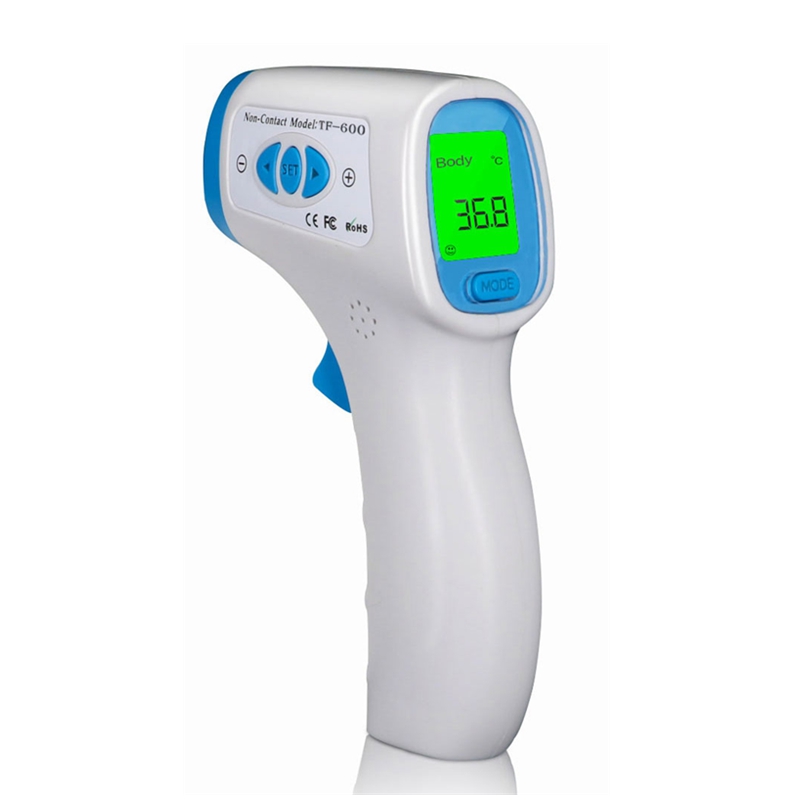Understand Your Application Needs
When selecting a non-contact infrared thermometer, it's crucial to start by understanding your specific application requirements. Different applications may demand varying levels of precision, temperature ranges, and features. For industrial purposes, you might need a thermometer with a broad temperature range and quick response time. In medical settings, accuracy within a narrow range is critical. Ensure that the supplier you choose can offer a product tailored to your needs, whether it's an ODM solution or a standard device.
Industrial Applications
Industrial applications can range from monitoring machinery temperatures to checking the heat of moving parts. The thermometer must withstand harsh environments and potentially high temperatures. Consider a supplier with expertise in manufacturing robust and durable devices.
Medical Applications
For medical purposes, particularly in pandemics, non-contact infrared thermometers are indispensable for quick and accurate screening. Accuracy and reliability are paramount, and suppliers should comply with health regulations and certifications.
Evaluate Temperature Range and Accuracy
The temperature range is a fundamental specification for non-contact infrared thermometers. Depending on your application, you should assess whether the thermometer can measure the required temperatures accurately. Most thermometers will specify their range in terms of minimum and maximum temperatures, typically spanning -50°C to 650°C for industrial models.
Understanding Accuracy
- Accuracy is often within ±1 to ±3°C. This parameter ensures reliable readings for critical applications.
- Check for calibration options to maintain accuracy over time, a key service that reputable factories and manufacturers often provide.
Consider D:S Ratio and Measuring Distance
The distance-to-spot ratio (D:S ratio) is an essential factor that dictates the size of the area the thermometer can measure from a given distance. A higher D:S ratio means the device can measure smaller areas from farther away, crucial for industrial settings where direct contact might be unsafe.
Application of D:S Ratio
- A D:S ratio of 12:1 allows measurement of a 1-inch area from 12 inches away. Consider this when discussing specifications with your supplier.
- For quality assurance, ensure the manufacturer provides detailed specifications and testing reports on the D:S ratio.
Assess Emissivity Settings and Surface Types
Emissivity is the efficiency with which a surface emits thermal radiation. Most thermometers have a standard emissivity setting around 0.95, suitable for organic surfaces. However, reflective surfaces like metals require adjustable emissivity settings for accurate readings.
Importance of Emissivity Adjustment
Suppliers should offer devices with adjustable emissivity settings, adaptable to different materials from metals to glass. This feature differentiates a standard device from a specialized tool necessary for versatile industrial applications.
Gauge Device Features and User Interface
The practicality of use is determined by the features and user interface of the thermometer. Important features include backlit LCD screens, dual laser pointers, and switchable temperature unit displays (Celsius/Fahrenheit).
User Interface and Features
- Look for user-friendly interfaces, vital for quick, error-free operation.
- Features like data hold, memory storage, and alarm settings enhance operational efficiency, especially in a factory setting.
Examine Build Quality and Durability
The build quality assures the longevity and reliability of the device. In industrial environments, a durable thermometer with resistance to dust, moisture, and mechanical impacts is crucial.
Importance of Build Quality
- Choose suppliers that emphasize quality control and durable materials in manufacturing.
- Robust designs can handle the rigors of industrial use, ensuring longer operational life.
Evaluate Battery Life and Power Options
Battery life impacts the usability of non-contact infrared thermometers. Efficient power management reduces downtime and maintenance costs, making them ideal for continuous use in medical and industrial settings.
Battery and Power Considerations
- Check for rechargeable batteries and energy-efficient modes to prolong usage times.
- Manufacturers should provide specifications on power consumption and offer solutions for battery replacement or charging.
Importance of Reliable Supplier Support
A reliable supplier offers more than just products. After-sales support, calibration services, and warranty are pivotal in maintaining the device's integrity and accuracy. Choose a supplier known for their comprehensive support services.
Factors in Supplier Support
- Ensure the supplier provides technical support and easy access to replacement parts.
- Look for suppliers offering robust customer service, including training and repair services.
Compare Price and Value Proposition
While price is an important factor, it should be considered alongside the value offered. Evaluate the features, durability, and support services against the cost. A higher initial investment may offer better long-term value.
Evaluating Cost vs. Value
- Consider the total cost of ownership, including maintenance and support services.
- Suppliers offering ODM services might provide customized solutions at competitive prices, adding significant value.
Review Compliance and Certification
Compliance with industry standards and certifications are non-negotiable. Whether it's ISO certifications or specific health and safety standards, ensure that your thermometer supplier adheres to these regulations to guarantee safety and reliability.
Certifications to Consider
- Check for relevant certifications, especially in medical and industrial applications.
- A certified manufacturer assures adherence to quality and safety standards.
Leis Provide Solutions
Choosing the right non-contact infrared thermometer supplier involves understanding your specific needs and matching them with the supplier's offerings. Consideration of application requirements, device features, supplier reliability, and compliance is essential. By analyzing these factors, you secure not only a thermometer but also long-term operational efficiency and safety. Selecting an ODM manufacturer can further customize the device to your unique requirements, providing a tailored solution that meets precise demands.
User hot search: Non Contact Infrared Thermometer
